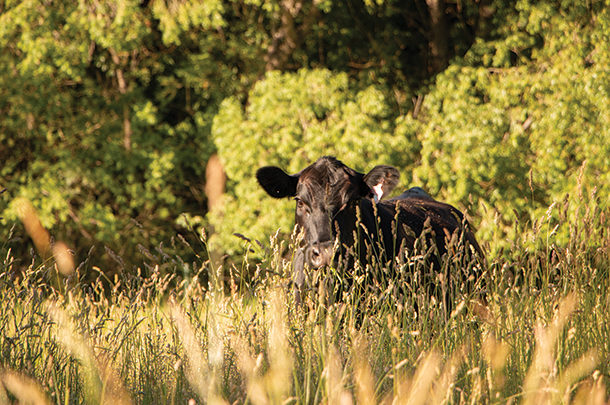As calving season runs for many spring-calving herds across the U.S., keep in mind that a successful breeding season starts with nutritional management decisions made months ahead of bull turnout.
Building a nutritional program for a cow-calf system requires understanding nutritional requirements and knowing the quality and quantity of your forage resources. In addition, understanding how stress (physiological or environmental) influences nutrient requirements is a good starting point to know when to intervene with supplement, which needs to be evaluated depending on stage of production, weather, body condition score (BCS) and age.
For instance, moving from mid- to late gestation increases a cow’s energy requirement 25% and her protein requirement 10%. However, post-calving has the greatest nutrient demands a cow will experience during the entire production cycle. Table 1 illustrates the increased protein and energy intake difference between late gestation and early lactation for a 1,200-pound mature beef cow with 20 pounds of milk production.

Due to the difference in nutrient requirements, the last chance to economically increase BCS on a cow during late gestation is the last 90 days prior to calving. After that, it is difficult for a thin cow to gain condition immediately after calving because it requires large amounts of high-quality feeds due to her increased nutrient demand for lactation.
Knowledge of the nutritive value and availability of forage selected by cattle, along with cow nutrient requirements, is critical for understanding supplementation programs and how to meet your production goals. For instance, the start of the forage growing season will be here soon.
However, for many spring-calving producers, cows are six to eight weeks into lactation prior to forage greenup or having sufficient grass growth. This delay in sufficient grass growth could present problems for many spring-calving producers.
In early forage greenup periods, sometimes we believe we have more high-quality forage available than there truly is or the selection of high-quality forage than we perceive. During these early spring grazing periods, management may have to look at stocking pastures at lower rates, or cattle receive supplementation to meet a desired level of nutrient intake.
In these circumstances, nutritional requirements may not be met and cows go into a negative energy balance post-calving, which can cause cows to have delayed resumption of estrus post-calving and may result in a greater percentage of open or late-breeding cows. To combat this negative energy balance issue, management decisions around supplementation during early lactation can better prepare cows for breeding.
So what do we do if we have thin cows or forage quality/quantity is inadequate to meet requirements? Spring-calving herds typically deal with a critical period from winter to spring when forage quality won’t be meeting cow requirements due to forage dormancy.
Additional energy may be required to restore their body condition to a moderate level. The challenge we run into is: Nutrient demands at this time are high and the additional nutrition supplied may be used to increased milk production rather than bodyweight gain.
For instance, feeding starch-based supplements and being deficient in protein can result in increased milk production and increased bodyweight loss. If cows can graze a high-quality forage, the grass will likely meet the energy needs of the cow.
However, if quantity of high-quality forage is limited, additional supplementation may be needed to offset the decreased energy intake. In this situation, providing a supplement that is high in protein and energy without limiting forage intake would be ideal.
Establishing a flexible nutrition program to put in place post-calving will help alleviate some stress from the calving season for cow-calf producers and less stress for the cows. Increasing the energy content of the diet post-calving will help decrease the postpartum interval and increase reproductive success during the breeding season.









